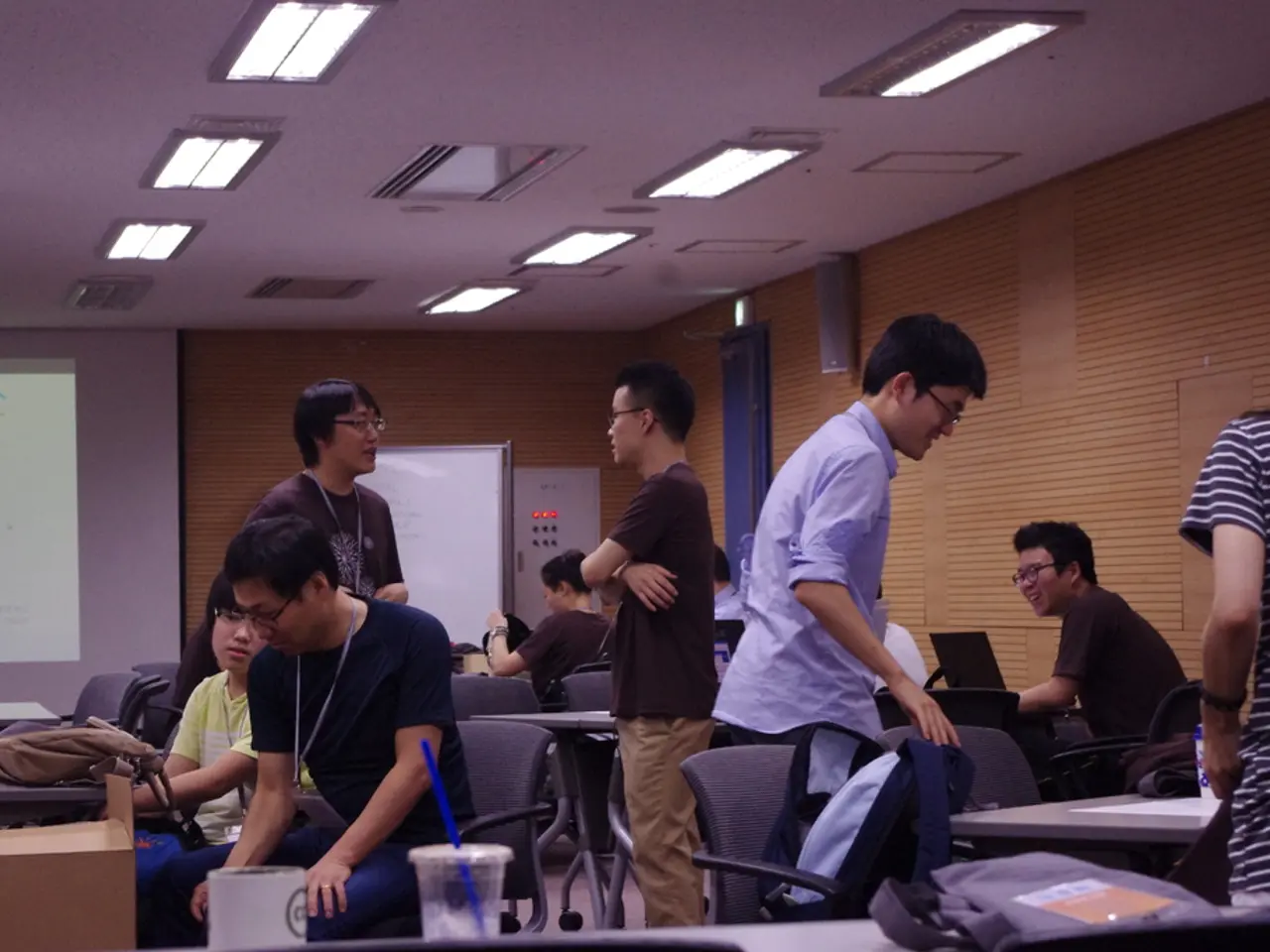Exploring Vygotsky's Concept of the Zone of Proximal Development within the Realm of Education
In the realm of educational psychology, Lev Vygotsky's Zone of Proximal Development (ZPD) stands as a significant concept that defines the gap between what a learner can do independently and what they can achieve with guidance. This framework, which emphasises social interaction and scaffolding, has profoundly influenced contemporary educational practices and learning theories [1][2][3][4].
Born in 1896 in Russia, Vygotsky was deeply influenced by the socio-political landscape of his time, particularly during a period of educational reform and revolutionary thought in the early 20th century. His work laid significant groundwork for understanding learning as a collaborative process fostered by cultural influences [1].
Unlike B.F. Skinner's behaviourism, Vygotsky's approach does not consider cognitive processes or social influences. Instead, it focuses on learners progressing with the assistance of more knowledgeable others, whereas Piaget highlights self-discovery through interaction with the environment [1].
In classroom settings, the application of ZPD fosters optimal learning experiences by bridging the gap between what students can do independently and what they can accomplish with guidance. This is achieved through teachers or peers providing targeted support—often called scaffolding—tailored to each student's current capabilities, gradually withdrawing assistance as learners gain competence and independence [2][4].
The ZPD highlights the potential for cognitive development through collaborative learning, where a "more knowledgeable other" helps the learner tackle tasks they cannot yet do alone but can manage with support. For example, a teacher might guide a student through problem-solving strategies, encouraging active engagement and gradually allowing independent work as confidence builds [2][4].
Empirical research supports the application of ZPD in education; successful scaffolding within the ZPD can lead to lasting developmental progress, enabling students to internalise skills and knowledge that endure beyond immediate assistance. This concept has influenced practices such as the use of teaching assistants and personalised learning plans that accommodate individual learners’ needs within their ZPDs [4].
However, scaffolding based on ZPD can be challenging to standardise because it depends on the unique needs and responses of each learner, which introduces variability in educational outcomes [4]. Despite this, Vygotsky’s sociocultural perspective on learning—centred on social context, interaction, and collaboration—remains foundational in modern education theory and practice [1][4].
Understanding the influence of cultural context on Vygotsky's Zone of Proximal Development is essential for effective educational strategies. Collaborative learning strategies, such as peer tutoring and group projects, allow students to share knowledge and perspectives, enriching the learning experience and fostering critical thinking and social skills [1].
Research on Vygotsky's Zone of Proximal Development continues to evolve, with promising directions focusing on technology-integrated learning and interdisciplinary applications. Despite criticisms regarding the empirical basis of Vygotsky's ideas and the emphasis on social interaction over individual cognitive development, the ZPD's holistic view of education, incorporating both social interaction and cultural context, remains a cornerstone in modern educational theory and practice [1][4].
In conclusion, Vygotsky's Zone of Proximal Development offers a transformative approach to education, emphasising the importance of social interaction, collaboration, and cultural context in learning. By fostering personalised learning experiences and empowering students within their ZPD, educators create a classroom atmosphere conducive to exploration, growth, and academic success.
[1] Cole, M., & Engeström, Y. (1988). Cognitive apprenticeship: Making thinking visible. Educational Researcher, 17(1), 4–14. [2] Wertsch, J. V. (1985). Vygotsky and the social formation of mind. Harvard University Press. [3] Van der Veer, R., & Valsiner, J. (1991). Narrative and cognitive development: A socio-historical perspective. Cambridge University Press. [4] Mercer, N. (2000). Ways of talking: Language, learning and teaching. Routledge.
- Vygotsky's Zone of Proximal Development, rooted in sociocultural perspectives, significantly impacts contemporary e-learning, as it advocates for a collaborative and scaffolded environment that aligns with education-and-self-development theories, advancing learning through social interaction and cultural influences.
- The influence of Lev Vygotsky's applied learning theories extends to the realm of distance education, as educators employ his Zone of Proximal Development concept to foster effective online learning experiences, bridging the gap between independent and guided learning for optimal results.




